
Ever since its release back on August 29, 2014, the Haswell-E microarchitecture has maintained it’s place among the top. And to keep up with the processor development, ASUS has bolstered their X-99 chipset arsenal considerably to keep with the demand of the enthusiast crowd. Today we take a look at their newest iteration of the tried and tested (and previously reviewed) X-99 A, the X-99-A II.
Product Showcase
The X99-A II motherboard does not shy away from its lineage. It still maintains it’s Black and White color scheme but the new onboard RGB lighting mechanic adds a new layer of bling to it. The motherboard features the same matte black color while the heatsinks feature a shiny silver color profile all the while maintaining that same glossy white cover with blue streaks across. The only change distinguishable from the older generation X99-A is that the A II has more streamlined and smoother finish on the heatsink and motherboard covers.

The motherboard in itself is brimming with features and buttons and headers and it’s not rare to feel claustrophobic. The CPU socket area is one of the most congested parts of the motherboard.

The motherboard features 8 DIMM slots with 4 slots placed on each side of the socket. But unlike its predecessor, it enables up to 128GB of DDR4 DRAM in a quad channel configuration. The MemOk! button, an ASUS exclusive feature, starts a memory compatibility check in case of a memory issue during a boot sequence. Also we can see the 8+4 pin power plugs.

When it comes to expansions, ASUS X99-A II features five mechanical PCI-E x16 slots and one PCI-E x1 slot. The motherboard is more than capable of running dual GPU setups in x16/x16 configuration and in the case of 3-way-SLI or 3-way-CrossFireX, it is capable of running the first 2 cards in full transfer rates but the third one runs at x8. Apart from running a 3-way multi-GPU setup, it can also run 2 more expansion cards in x8/x8/x8/x8/x8 without any problem. And with 40 PCI-E 3.0 lanes, one shouldn’t expect anything less from this one. But ASUS thought to push their engineers a little bit more and installed RGB PCI-E slot clips which glow almost any color and with a variety of patterns which adds to the already glorious aesthetics.
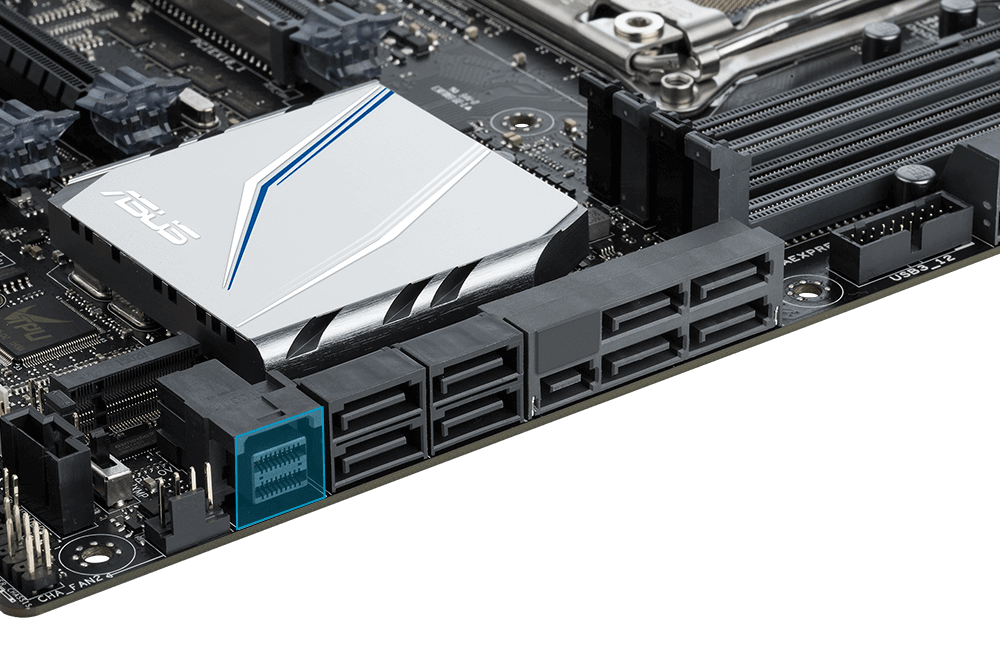
ASUS didn’t cut any corners with their storage section. Armed with 10 6Gbps SATA ports, the X99-A II offers impressive RAID capabilities with U.2 and M.2 ports offering multiple choices between faster storage options. USB 3.0 and the brand new 3.1 ports occupy the rear port cluster. But the one neat feature that stands out is the USB BIOS Flashback. If you want to install a new processor and want it to be up and running flawlessly, just turn off your system, plug in USB storage device with the desired firmware, press the button for a few seconds and the board will take care of the firmware by itself. Long gone are the days when you needed to install the processor for the firmware to update itself.

Coming to the backport we have
- 1 x PS/2 keyboard/mouse combo port(s)
- 1 x LAN (RJ45) port(s)
- 2 x USB 3.1 (Type-A + Type-C)
- 4 x USB 3.0
- 4 x USB 2.0
- 1 x Optical S/PDIF out
- 5 x Audio jack(s)
Specifications
| CPU | Intel® Core™ i7 X-Series Processors on LGA 2011-3 Socket |
| Chipset | Intel® X99 |
| Memory | 8 x DIMM, Max. 128GB, DDR4 3333(O.C.)/3300(O.C.)/3200(O.C.)/3000(O.C.)/2800(O.C.)/2666(O.C.)/2400(O.C.)/2133 MHz Memory Quad Channel Memory Architecture Supports Intel® Extreme Memory Profile (XMP) |
| Multi-GPU Support | Supports NVIDIA® Quad-GPU SLI™ Technology Supports NVIDIA® 3-Way SLI™ Technology Supports AMD Quad-GPU CrossFireX™ Technology Supports AMD 3-Way CrossFireX™ Technology |
| Expansion Slots | 40-Lane CPU- 3 x PCIe 3.0/2.0 x16 (x16 or x16/x16, x8/x16/x8) 28-Lane CPU- 3 x PCIe 3.0/2.0 x16 (x16, x16/x8, x8/x8/x8) 1 x PCIe 2.0 x16 (x4 mode) 2 x PCIe 2.0 x1 (x1 mode) |
| Storage | New Intel® Core™ i7 X-Series Processors : 1 x M.2 x4 Socket 3, with M Key, type 2242/2260/2280/22110 storage devices support (Support PCIE SSD only) 1 x U.2 port, support PCIe 3.0 x4 NVM Express storage Intel® X99 chipset : 1 x SATA Express port, Compatible with 2 x SATA 6.0 Gb/s ports 8 x SATA 6Gb/s port(s), Support Raid 0, 1, 5, 10 Supports Intel® Smart Response Technology, Intel® Rapid Recovery Technology |
| USB Slots | Intel® X99 chipset : 5 x USB 3.0/2.0 port(s) (1 at back panel; blue, 4 at mid-board) Intel® X99 chipset : 8 x USB 2.0/1.1 port(s) (4 at back panel; blue, 4 at mid-board) ASMedia® USB 3.1 controller : 2 x USB 3.1/3.0/2.0 port(s) (at back panel, teal blue, Type-A + Type-C) ASMedia® USB 3.0 controller : 3 x USB 3.0/2.0 port(s) |
| Back I/O Ports | 1 x PS/2 keyboard/mouse combo port(s) 1 x LAN (RJ45) port(s) 2 x USB 3.1 (Type-A + Type-C) 4 x USB 3.0 4 x USB 2.0 1 x Optical S/PDIF out 5 x Audio jack(s) |
| Internal I/O Ports | 1 x U.2 port 1 x AAFP connector 1 x RGB Header(s) 2 x USB 3.0 connector(s) support(s) additional 4 USB 3.0 port(s) 2 x USB 2.0 connector(s) support(s) additional 4 USB 2.0 port(s) 1 x SATA Express connector: , Compatible with 2 x SATA 6.0 Gb/s ports 1 x M.2 Socket 3 with M Key design, type 2242/2260/2280/22110 storage devices support (Support PCIE SSD only) 8 x SATA 6Gb/s connector(s) 1 x CPU Fan connector(s) (1 x 4 -pin) 1 x CPU OPT Fan connector(s) (1 x 4 -pin) 2 x Chassis Fan connector(s) (2 x 4 -pin) 1 x S/PDIF out header(s) 1 x Thunderbolt header(s) 1 x 24-pin EATX Power connector(s) 1 x 8-pin ATX 12V Power connector(s) 1 x 4-pin ATX 12V Power connector(s) 1 x EZ XMP switch 1 x 5-pin EXT_FAN(Extension Fan) connector 1 x DRCT header(s) 1 x MemOK! button(s) 1 x Thermal sensor connector(s) 1 x CPU OV 1 x Power-on button(s) 1 x Reset button(s) 1 x Clear CMOS jumper(s) 1 x Water Pump header (4-pin) 1 x 14-1 pin TPM connector 1 x COM port header |
| Form Factor | ATX Form Factor 12 inch x 9.6 inch ( 30.5 cm x 24.4 cm ) |
In The Box
As usual, ASUS provides modest amount of accesories with their products and as such, the X99-A II is no different. Here’s the content we received with our review sample.
User’s manual
ASUS Q-Shield
4 x SATA 6Gb/s cables
1 x M.2 Screw Package
1 x CPU installation tool
1 x Supporting DVD
1 x SLI bridge
1 x Q-connector
1 x Extension Cable for RGB strips
Test Setup
The test system used for this review was as follows –
- Processor: Intel Core i7-5960X courtesy Intel India
- Motherboard: You guessed it, ASUS X99-A II courtesy Asus India
- RAM: Kingston Hyper X Fury DDR4 16GB
- Storage : Kingston SSDNow V300
- Power Supply : Cooler Master V1000
- Cooling System : Corsair H80i
Benchmarks
We ran the X99-A II through our usual benchmark routine. However, it was a bit optimized to make it a bit smaller.
Aida 64
First up is the Industry favorite Aida 64 Benchmark Suite. we used the a part of the CPU suite and the FPU suite.
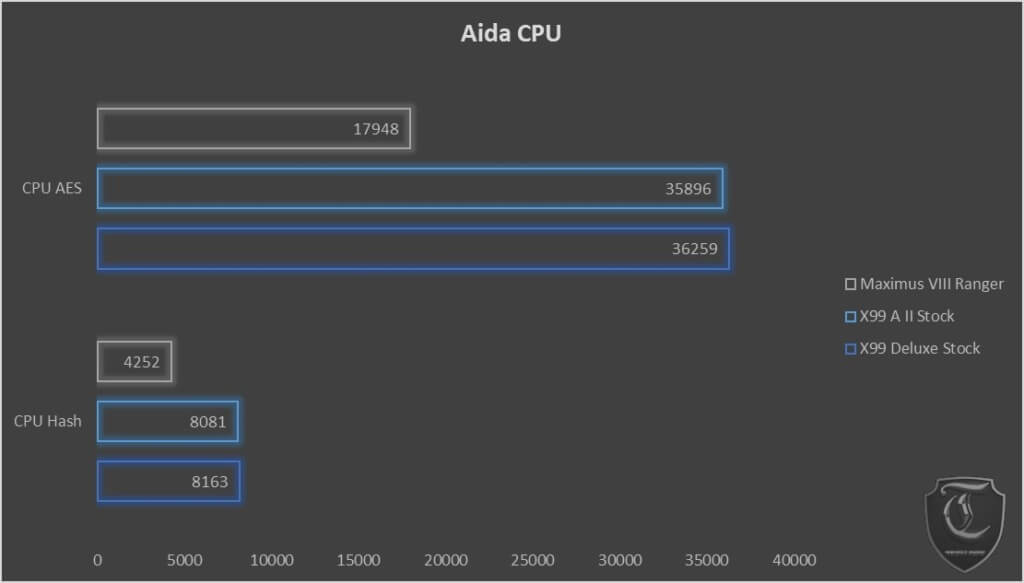
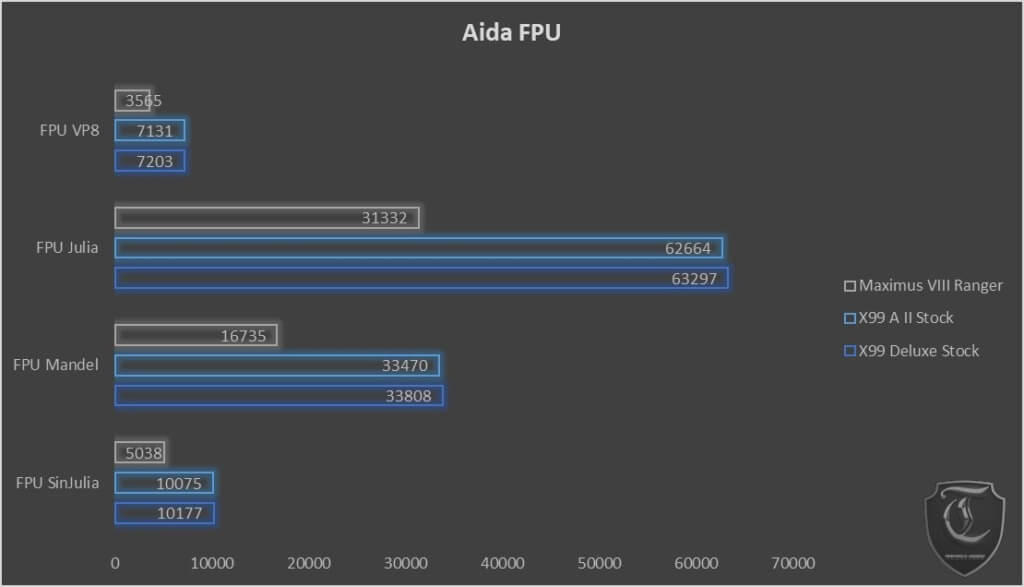
Cinebench
CINEBENCH is a real-world cross platform test suite that evaluates your computer’s performance capabilities. CINEBENCH is based on MAXON’s award-winning animation software CINEMA 4D. Cinebench 15 is the latest iteration.
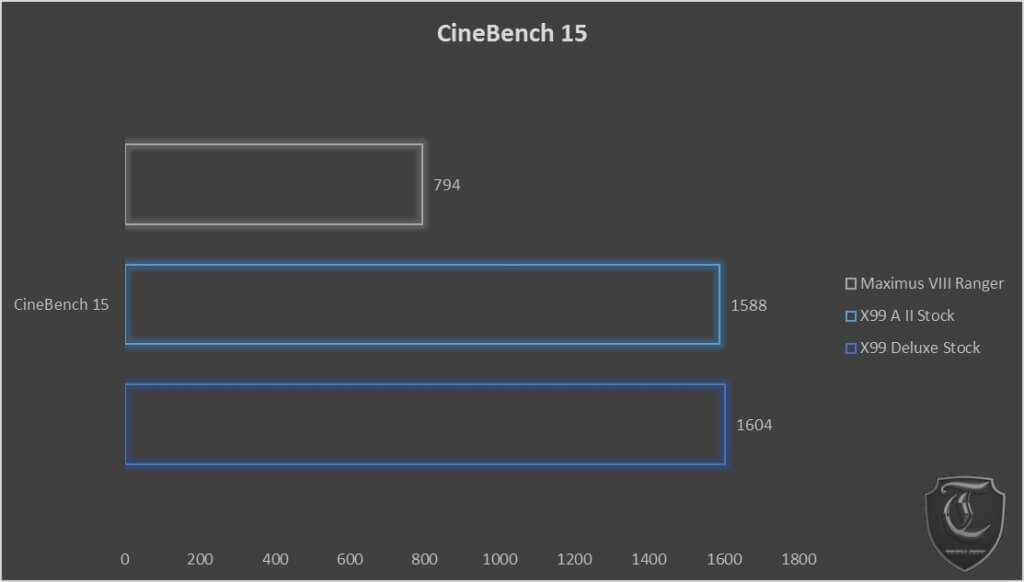
WPrime
wPrime uses a recursive call of Newton’s method for estimating functions, with f(x)=x2-k, where k is the number we’re sqrting, until Sgn(f(x)/f'(x)) does not equal that of the previous iteration, starting with an estimation of k/2. It then uses an iterative calling of the estimation method a set amount of times to increase the accuracy of the results. It then confirms that n(k)2=k to ensure the calculation was correct. It repeats this for all numbers from 1 to the requested maximum.
This benchmark is extremely dependent on the stability of cpu and memory subsystem. Lower score is considered better.
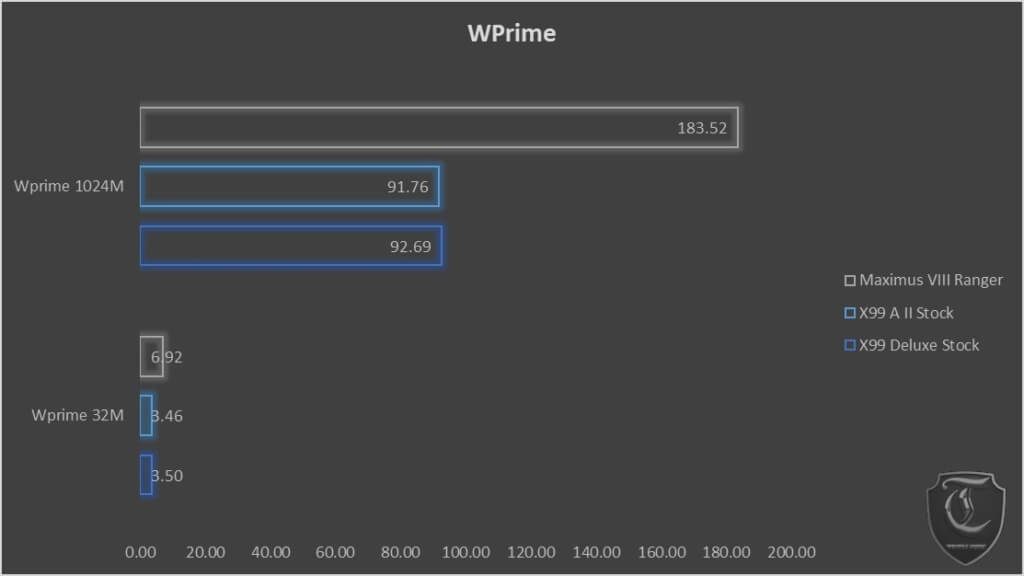
X264HD
This benchmark encodes a full HD (1080p) video into a high-quality x264 video. This is especially CPU intensive and prefers more cores.
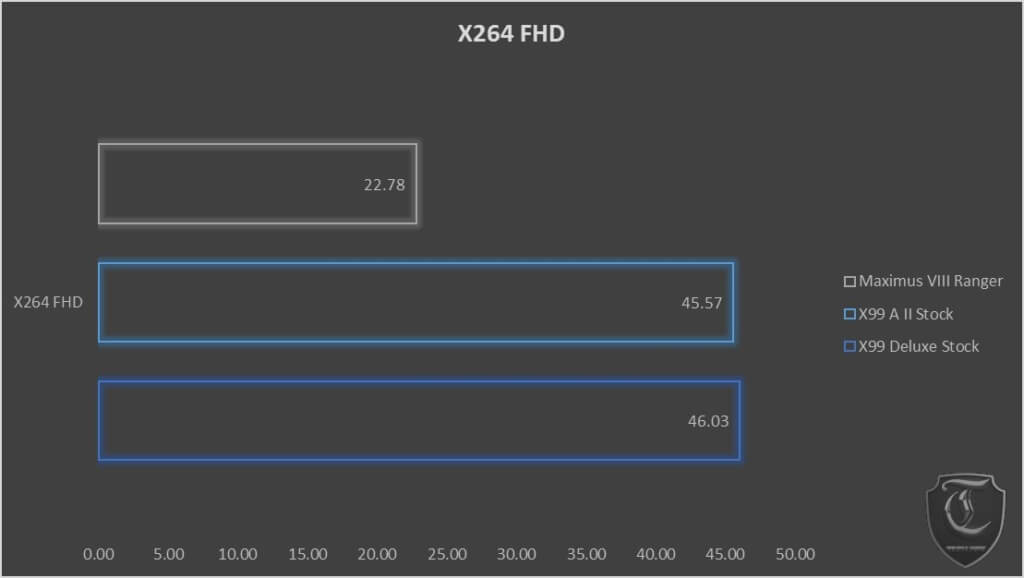
All in all the X99-A II manages a respectable position across the board. This is going to be our main go to board in entry level workstation building form now on.
Final Verdict
The engineers at ASUS are always hard at work to bring their consumers something worth their time and their money. And with each passing generation of processor and technology, the enthusiast crowd is looking towards something more. The X99 A-II is definitely a step up from their first generation LGA2011-v3 motherboards, providing consumers with a plethora of tweakable and useful feature, all the while adding some aesthetic improvements. And with the addition of a few important features like the Asus Safeslot and onboard RGB header(among others), this motherboard isn’t your normal rebranding. It’s almost a new start for the veterans and the newcomers of the enthusiast brigade. While the X99 is going to pinch your wallet, buying this one is well worth it.

Buying Links:







Great review, liked the ( very accurate ) description of wprime.
A few notes for cinema 4d based cinebench. Its a very scalar based branch heavy code path with little data dependence. A good score in cinebench denotes a small branch misprediction penalty for that particular CPU. This is especially beneficial when there is a micro op cache which enables the CPU to be able to call the last performed operation without running the whole code path again. Notable architectures with micro op cache has been the Intel sandy bridge cores and the NVidia Denver cores ( TK-1 )
Though branchy code path can denote CPU performance well, I find it it a little limited in the sense that vectorisation heavy instructions like AVX are not used more than they are. I don’t know whether automatic vectorisation is enabled.
Typo: “It then confirms that n(k)2=k to ensure the calculation was correct.” Should be $n^2$=K
About the board itself, its quite costly!!! This is entry level? What is this cost about? The LGA? The over-laden chipset? The rgb lights? I yearn for a day when worthy platforms such as LGA can be had for a little cheaper. 15 k is an honest price